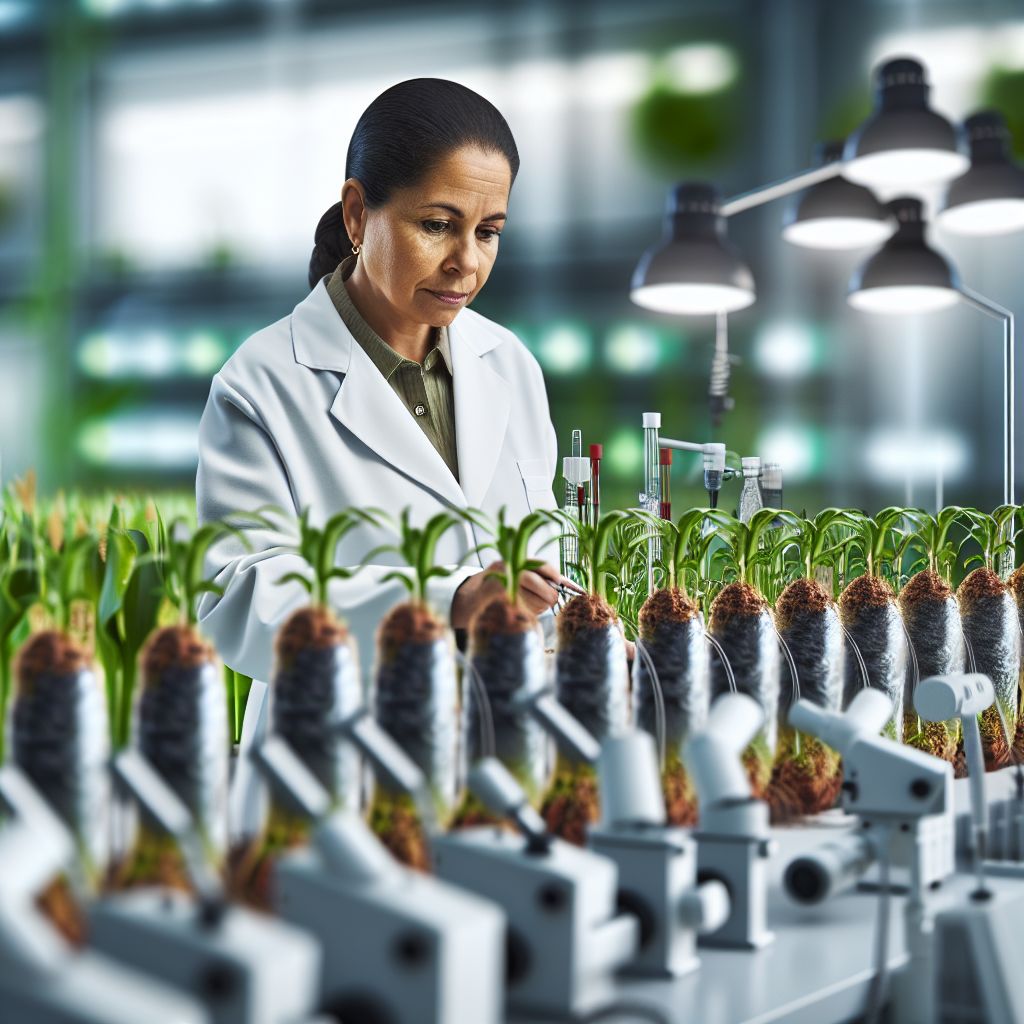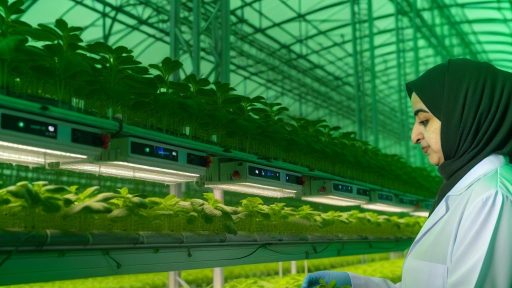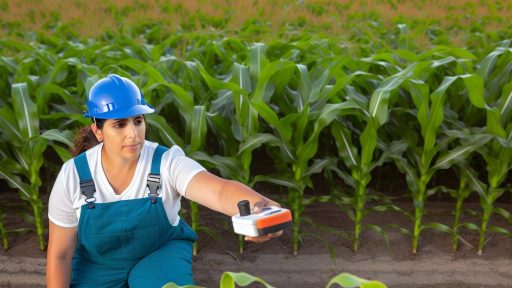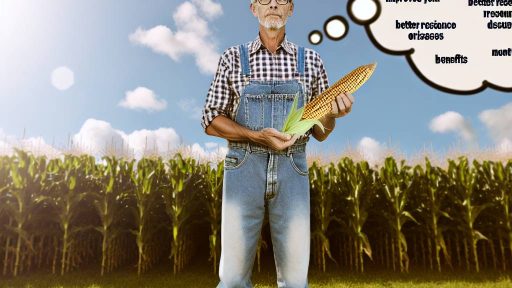Introduction to Biotechnological Approaches in Agriculture
Biotechnology offers innovative solutions for agriculture.
These techniques enhance crop yields and sustainability.
Farmers increasingly rely on biotechnology to combat diseases.
This approach reduces reliance on chemical pesticides.
Consequently, the environmental footprint of farming decreases.
Understanding Biotechnology’s Role
Biotechnology encompasses a variety of scientific disciplines.
These include genetics, molecular biology, and biochemistry.
Through genetic engineering, scientists create disease-resistant plants.
Such plants can withstand diverse environmental challenges.
Furthermore, they contribute to food security globally.
Key Techniques in Biotechnological Approaches
Several techniques are vital in developing disease-resistant plants.
- Genetic modification allows the insertion of specific genes.
- Marker-assisted selection accelerates traditional breeding processes.
- Tissue culture enables rapid propagation of desired traits.
These methods enhance plant resilience significantly.
Researchers and farmers collaborate to implement these technologies.
Benefits of Disease-Resistant Plants
Disease-resistant plants offer numerous advantages.
- Increased crop yields strengthen food supplies.
- Reduced pesticide use lowers farming costs.
- Enhanced biodiversity promotes ecosystem health.
Farmers benefit financially and environmentally from these innovations.
Transform Your Agribusiness
Unlock your farm's potential with expert advice tailored to your needs. Get actionable steps that drive real results.
Get StartedUltimately, these plants support sustainable agricultural practices.
Challenges and Considerations
Despite their benefits, biotechnological approaches face challenges.
Public perception often influences adoption rates.
Additionally, regulatory hurdles can delay progress.
Ethical considerations regarding GMOs also arise.
Consequently, open communication is essential for public trust.
Overview of Plant Diseases and Their Economic Impact
Understanding Plant Diseases
Plant diseases affect a wide range of species globally.
They can be caused by pathogens, including fungi, bacteria, and viruses.
Additionally, environmental factors can play a significant role.
Understanding these diseases is crucial for effective management strategies.
Economic Consequences
The economic impact of plant diseases is staggering.
They can lead to reduced crop yields and quality.
This reduction affects farmers, suppliers, and consumers alike.
Globally, losses are estimated in the billions each year.
Affected crops directly impact food security.
Examples of Economic Impact
One major example is the late blight disease in potatoes.
This disease led to the Irish Potato Famine in the 1840s.
More recently, wheat rust diseases have threatened global wheat supplies.
Such incidents demonstrate the importance of addressing plant diseases.
Strategies for Management
Farmers use various management strategies against plant diseases.
These include crop rotation and resistant varieties.
Integrated Pest Management (IPM) also plays a key role.
Education about disease prevention is crucial for success.
Future Considerations
As global temperatures rise, plant diseases may shift patterns.
Showcase Your Farming Business
Publish your professional farming services profile on our blog for a one-time fee of $200 and reach a dedicated audience of farmers and agribusiness owners.
Publish Your ProfileThis shift can exacerbate economic losses in agriculture.
Investing in research can lead to effective solutions.
Biotechnological approaches hold great promise in this regard.
Genetic Modification Techniques for Disease Resistance
Overview of Genetic Modification
Genetic modification (GM) enhances disease resistance in plants.
It involves altering the plant’s genetic makeup.
This process can introduce specific traits to combat diseases.
Scientists utilize various techniques for effective modifications.
Transgenic Techniques
Transgenic techniques create plants with genes from other species.
This method allows for the inclusion of traits not found in the original species.
For example, inserting genes from bacteria grants resistance to pathogens.
Additionally, markers help in tracking successful modifications.
Case Study: Bt Cotton
Bacillus thuringiensis (Bt) cotton provides a strong example of transgenic success.
This variety produces toxins harmful to specific insects.
As a result, it significantly reduces pesticide use.
Farmers report higher yields and lower production costs with Bt cotton.
CRISPR Technology
CRISPR is a revolutionary tool for precise gene editing.
This approach allows scientists to modify genes directly.
They can deactivate genes that predispose plants to diseases.
Furthermore, CRISPR enhances the plant’s natural defense mechanisms.
Application Example: Leaf Blight Resistance
Researchers used CRISPR to enhance resistance to leaf blight.
This disease affects staple crops like rice and wheat.
The modified plants show resilience against the pathogen.
Consequently, crop losses decrease significantly in affected regions.
RNA Interference Techniques
RNA interference (RNAi) disrupts the expression of specific genes.
This technique decreases the production of proteins that facilitate disease.
It effectively silences genes tied to vulnerability in plants.
As a result, RNAi enhances disease tolerance without foreign genes.
Field Trials: Tomato Plants
A study on tomato plants used RNAi to increase disease resistance.
This approach led to reduced symptoms of viral infections.
Farmers observed improved fruit quality and quantity.
Furthermore, these plants maintained resistance through multiple growing seasons.
Learn More: Cost-Effective Automated Machinery Options For Farmers
CRISPR-Cas9 Technology in Plant Breeding
Introduction to CRISPR-Cas9
CRISPR-Cas9 stands as a groundbreaking technology for gene editing.
This method allows precise modifications in the DNA of plants.
Scientists employ it to enhance disease resistance in crops.
Additionally, CRISPR-Cas9 is more efficient than traditional breeding techniques.
How CRISPR-Cas9 Works
The CRISPR-Cas9 system consists of two key components.
First, a guide RNA directs the Cas9 enzyme to a specific DNA sequence.
Next, Cas9 cuts the DNA at the targeted location.
This cut triggers the plant’s natural repair process.
Showcase Your Farming Business
Publish your professional farming services profile on our blog for a one-time fee of $200 and reach a dedicated audience of farmers and agribusiness owners.
Publish Your ProfileResearchers can either disrupt a gene or insert a new one during this repair.
Applications in Disease Resistance
CRISPR-Cas9 enhances the disease resistance of several plant species.
For example, scientists have developed blight-resistant rice varieties.
These plants exhibit enhanced resilience against pathogens.
Moreover, they can withstand adverse environmental conditions.
Furthermore, researchers target specific genes associated with disease susceptibility.
Benefits of CRISPR-Cas9 in Plant Breeding
This technology offers several advantages over conventional methods.
- It reduces the time required for developing disease-resistant varieties.
- CRISPR-Cas9 minimizes the introduction of unwanted traits.
- It allows for multiple edits in one go, increasing efficiency.
Overall, CRISPR-Cas9 is transforming plant breeding practices significantly.
Challenges and Considerations
Despite its advantages, CRISPR-Cas9 faces certain challenges.
Regulatory concerns regarding genetically edited organisms continue to evolve.
Moreover, public perception of genetically modified organisms affects acceptance.
Research into potential off-target effects remains crucial for safety.
Future Prospects of CRISPR-Cas9 in Agriculture
The future of CRISPR-Cas9 in agriculture looks promising.
Continued innovation can lead to improved traits in crops.
As researchers work on more crops, food security can be enhanced.
Thus, CRISPR-Cas9 plays a vital role in addressing global agricultural challenges.
Find Out More: Optimizing Resource Use in Controlled Environment Agriculture
Molecular Markers and Marker-Assisted Selection
Introduction to Molecular Markers
Molecular markers serve as vital tools in plant breeding.
They help identify specific traits associated with disease resistance.
Markers vary in type, including DNA, RNA, and protein biomarkers.
These molecular indicators provide genetic information critical for selection.
Types of Molecular Markers
- Random Amplified Polymorphic DNA (RAPD)
- Simple Sequence Repeat (SSR)
- Single Nucleotide Polymorphism (SNP)
RAPD markers are quick and cost-effective for initial screening.
SSR markers deliver high levels of polymorphism, aiding in precise mapping.
SNP markers represent the most common type of genetic variation.
Marker-Assisted Selection (MAS) Explained
Marker-assisted selection enhances traditional plant breeding approaches.
This method improves the efficiency of selecting desired traits.
By utilizing molecular markers, breeders can identify individuals with resistance genes.
Consequently, MAS speeds up the breeding cycle significantly.
Advantages of Marker-Assisted Selection
- Increases accuracy in selecting disease-resistant plants.
- Reduces the time needed for breeding programs.
- Facilitates the identification of complex traits.
MAS provides a streamlined approach to developing better varieties.
This technique ultimately leads to improved agricultural yields.
Challenges and Limitations
Despite its advantages, MAS faces certain challenges.
One major issue is the cost associated with developing markers.
Additionally, not all traits have well-characterized molecular markers.
Breeders must overcome these hurdles to maximize effectiveness.
Explore Further: Drone Technology Transforming Farm Operations
Transgenic Plants: Success Stories and Challenges
Innovative Successes in Transgenic Crops
Transgenic crops have shown remarkable potential in enhancing agricultural productivity.
Crops like Bt cotton and Bt corn exhibit increased resistance to pest damage.
Farmers using these crops report reduced reliance on chemical pesticides.
This reduction benefits both the environment and human health.
Moreover, these crops contribute to improved yield stability under adverse conditions.
Showcase Your Farming Business
Publish your professional farming services profile on our blog for a one-time fee of $200 and reach a dedicated audience of farmers and agribusiness owners.
Publish Your ProfileFor instance, canola modified to resist herbicides has simplified weed management.
Successes extend beyond pest resistance.
Some varieties tolerate drought, enhancing resilience against climate change.
Rice biofortified with vitamins is helping tackle malnutrition in developing countries.
These innovations demonstrate the power of biotechnology in improving nutritional value.
Challenges and Obstacles Encountered
Despite successes, transgenic plants face considerable challenges.
Public perception remains a significant hurdle.
Many consumers express concerns about safety and environmental impact.
These concerns often stem from misunderstandings about genetic engineering.
Regulatory hurdles complicate the approval process for new transgenic varieties.
Lengthy assessments delay timely access to beneficial crops.
Additionally, issues of gene flow into non-transgenic crops continue to generate debate.
Farmers may also experience challenges in managing transgenic and non-transgenic crops together.
Ultimately, such challenges call for ongoing education and transparent communication.
The Future of Transgenic Plant Technology
Future advancements in transgenic technologies hold great promise.
Research into CRISPR and gene editing techniques expands possibilities.
These methods allow for precise modifications without introducing foreign DNA.
This precision could alleviate some safety concerns among consumers.
Moreover, integrating transgenic traits with traditional breeding practices can enhance genetic diversity.
Such strategies also foster resilience in crop plants against diseases.
Collaboration between scientists, farmers, and policymakers is essential.
They must work together to navigate regulations and ensure food security.
Ultimately, the future lies in marrying innovation with public trust and sustainable practices.
Gain More Insights: Secure Financial Management For Farmers Through Agri-Fintech Solutions

Natural Biotechnological Approaches: Breeding for Resistance
Understanding Resistance Breeding
Resistance breeding involves selecting plants that demonstrate natural resilience to diseases.
This method utilizes genetic traits that have been naturally developed over generations.
Consequently, farmers can cultivate crops that require fewer chemical interventions.
Moreover, resistance breeding promotes sustainability in agricultural practices.
Traditional Breeding Techniques
Traditional breeding starts with identifying parent plants that show desirable traits.
From these parents, offspring are created through controlled pollination.
Selected offspring are then evaluated for disease resistance over multiple growing seasons.
Ultimately, this results in improved crop varieties suited for specific local conditions.
Marker-Assisted Selection
Marker-assisted selection enhances traditional breeding through genetic markers.
This technique allows breeders to identify desirable traits with higher precision.
As a result, it accelerates the breeding process significantly.
Notably, this method reduces the time needed to develop disease-resistant varieties.
Case Studies of Successful Breeding Programs
Various agricultural institutions have successfully implemented resistance breeding programs.
The International Rice Research Institute has developed varieties resistant to rice blast disease.
Similarly, researchers at the University of Florida have created tomato varieties resistant to bacterial wilt.
These examples illustrate the tangible benefits of focused breeding efforts.
Showcase Your Farming Business
Publish your professional farming services profile on our blog for a one-time fee of $200 and reach a dedicated audience of farmers and agribusiness owners.
Publish Your ProfileThe Future of Disease Resistance Breeding
Looking ahead, advancements in biotechnology will likely enhance resistance breeding.
For instance, gene editing technologies like CRISPR promise to revolutionize crop improvement.
These innovations can introduce specific resistance traits more accurately.
Thus, the future holds great potential for developing robust, disease-resistant plants.
Regulatory Framework and Public Perception of Biotech Crops
Understanding the Regulatory Landscape
The regulatory framework for biotech crops varies globally.
In the United States, the USDA, FDA, and EPA oversee biotech product approvals.
Each agency evaluates safety regarding human health and environmental impacts.
In contrast, the European Union follows a more stringent approval process.
EU regulations emphasize precaution and public consultation.
Moreover, the role of international agreements impacts biotechnological regulation.
Countries often collaborate through the Cartagena Protocol on Biosafety.
Public Attitudes Towards Biotech Crops
Public perception of biotech crops is mixed and often polarized.
On one hand, some individuals embrace biotechnology for its potential benefits.
They argue that biotech crops can enhance food security and improve yields.
Conversely, others express concerns about safety and environmental risks.
Public trust is critical in determining acceptance of biotech innovations.
Effective communication is vital in educating the public about biotech benefits.
Surveys show that informed individuals tend to support biotech crops more.
Challenges in Regulation and Acceptance
Regulating biotech crops involves significant challenges.
One major issue is balancing innovation with safety standards.
Additionally, misinformation can complicate public understanding and acceptance.
Social media platforms often amplify fears surrounding biotechnology.
Addressing these challenges requires collaboration among stakeholders.
Governments, scientists, and advocacy groups must work together effectively.
The Future of Biotech Crop Regulation
The future of biotech crop regulation is evolving rapidly.
Technological advancements may enable more efficient regulatory processes.
For instance, gene editing technologies like CRISPR face new regulatory scrutiny.
Regulators must adapt to these innovations while ensuring safety.
Public dialogue will play a crucial role in shaping future regulations.
Ultimately, fostering trust is essential for sustainable adoption of biotech crops.
Future Perspectives on Disease-Resistant Plants in Sustainable Agriculture
Advancements in Biotechnology
Recent innovations in biotechnology have revolutionized plant breeding.
Gene editing tools like CRISPR enable precise modifications.
Such technologies enhance resistance against various diseases.
Consequently, crops can tolerate environmental stressors more effectively.
This shift minimizes reliance on chemical pesticides.
Integration into Agricultural Practices
Farmers increasingly adopt disease-resistant varieties in their fields.
These plants reduce crop losses significantly.
Moreover, they increase yield stability across seasons.
This practice supports food security at a global level.
As a result, sustainable agriculture practices gain traction.
Showcase Your Farming Business
Publish your professional farming services profile on our blog for a one-time fee of $200 and reach a dedicated audience of farmers and agribusiness owners.
Publish Your ProfileCollaboration Between Stakeholders
Collaboration is key to advancing disease-resistant plant initiatives.
Governments, research institutions, and farmers must unite.
Public-private partnerships foster innovation and transfer of technology.
Educational programs will further engage farmers in sustainable practices.
Environmental Impact and Biodiversity
Disease-resistant plants contribute positively to biodiversity conservation.
They decrease the need for chemical inputs, protecting ecosystems.
Moreover, these cultivars encourage the survival of beneficial organisms.
Thus, they play a crucial role in maintaining ecological balance.
Future Research Directions
Future research should focus on improving disease resistance.
Scientists must explore genetic diversity within crops.
Additionally, studying plant-microbe interactions can yield promising results.
Implementing sustainable practices will ensure long-term benefits.
Ultimately, ongoing research and development are essential for success.




